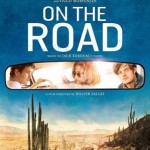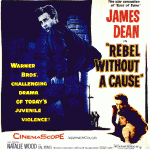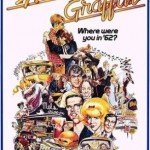

Coming of age is a term that for me encompasses those years, those days, that moment in time when we realize we are alive — that we are sentient beings apart from our parents, and that we are responsible for ourselves. Coming of age often involves a sexual awareness or awakening as well, though that is only one aspect of the phenomenon.
Standing on the edge of childhood’s shore, adolescence is the ocean we must cross to become adults. Or so we imagine when we are young. We don’t realize until years later that there is no final port of call. We never reach the imagined shores of the fabled continent of Reason, Happiness, and Fullfilment but instead spend our time on this Earth navigating an archipelago of alluring but ultimately unsustainable desert islands, sometimes running aground on dangerous reefs. What we find, if we don’t become marooned on one of these islands and go tropo under a palm tree or at the shipwreck bar, is that the crossing, the passage across unknown waters is life; there is no continent of adulthood, just the becoming.

If you put the whole metaphor on land and substitute a boat for a car, you have a coming of age on the road story.
Cars are a big part of American culture. Having one’s own car or access to a car is an important part of growing up in the Land of the Free. I’m not condoning our reliance on the automobile, I’m just saying that cars are important to our way of life and our freedom of movement. One of the symbols of coming of age in American society is getting a driver’s license. When I got mine at the age of sixteen, I was allowed to drive my mother’s Chevy Nova to my first “real” job — working weekends at a bakery six miles away. I was allowed to drive it occasionally to school functions or to a friend’s house. I remember my first independent road trip with four friends — a five-hour jaunt to Ocean City Maryland one summer Saturday when I was seventeen — which nearly ended in us all being arrested, but that is another story…
Twentieth century coming of age on the road stories that stick in my mind include the classic ones: On the Road, Rebel Without a Cause, American Graffiti and Diner. Recently I revisited all of these stories, re-reading Kerouac’s On the Road and watching the movie versions of the others. While I still found them enjoyable, I was struck by how old the characters seemed and how, well, entitled. Even Kerouac’s thinly disguised alter ego had the luxury of time — and beneficent friends who were willing to sustain and support him as he traveled around the country looking for life.
A number of YA (young adult) novels have been published that include road trips as part of the plot. But for me, the road trip is more than a plot device. As Audioslave sings, “I am not your rolling wheels, I am the highway.” For me, the road trip is the metaphor, the setting, the structure.
There’s a difference between a YA novel and the classic, coming-of-age novel which takes a longer perspective and might employ irony, wistful yearning, and hard-earned wisdom. Coming-of-age stories are equally enjoyed by the mature reader who remembers what it was like to be young. Indeed, I wrote Looking for Redfeather for that awkward, troubled teen who lives within me and who has refused to grow up even after all these miles.
Road trips, like ocean crossings, are all about the journey. But of course you need a destination to justify the trip. You need a mission, a goal, a purpose. A redfeather is as good as any. I’ve been driving many miles now, and although I still haven’t found Redfeather, I’ve caught a few glimpses of him, running through the trees or soaring overhead on an updraft of warm summer air. Redfeather is my metaphor for awareness, experience, and for life itself.
 Looking for Redfeather is now available in audiobook format from Audible.com, narrated by Aaron Landon. Listen to a sample. It’s also available in trade paperback and electronic format. Next, the stage play…
Looking for Redfeather is now available in audiobook format from Audible.com, narrated by Aaron Landon. Listen to a sample. It’s also available in trade paperback and electronic format. Next, the stage play…